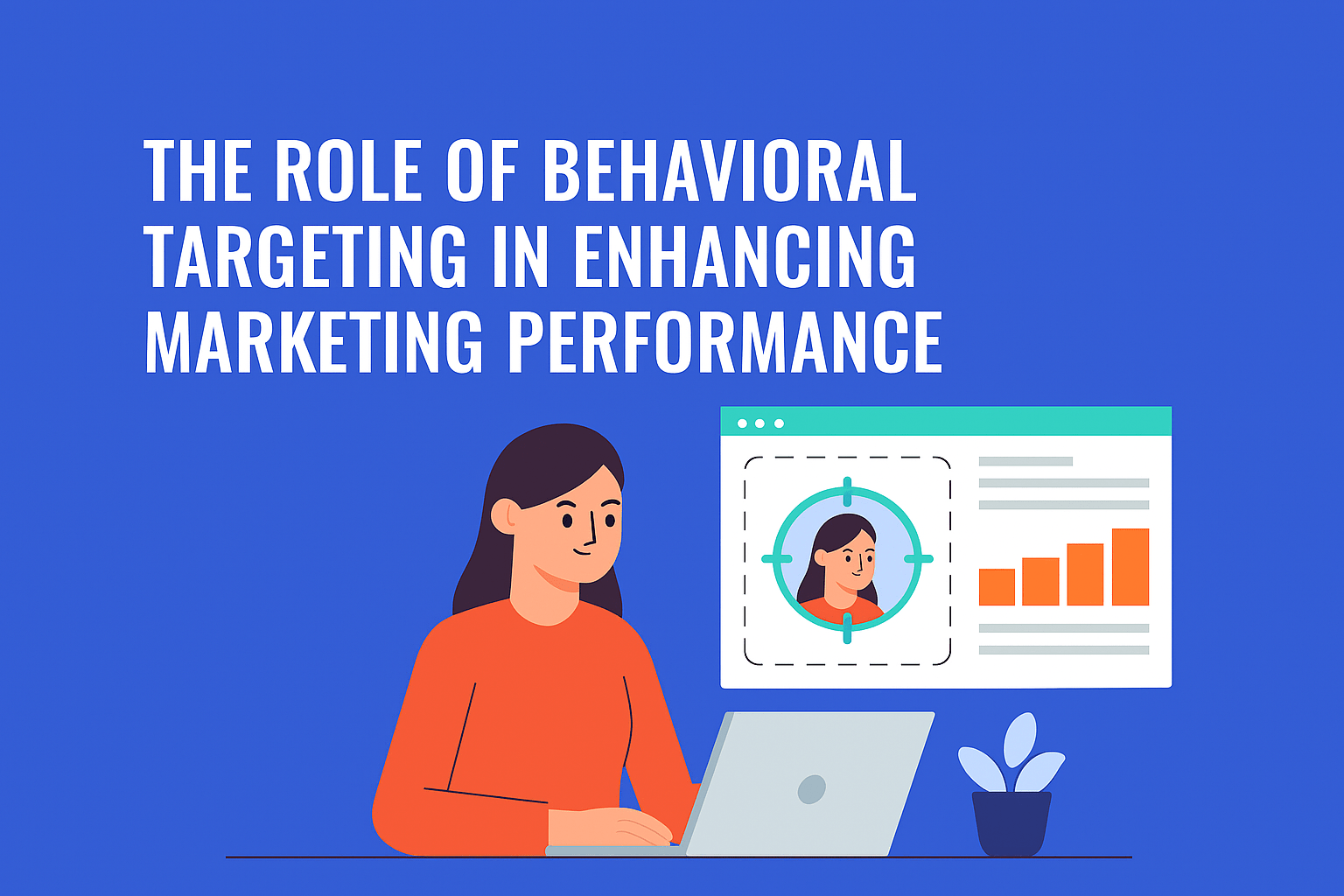The Role of Behavioral Targeting in Enhancing Marketing Performance

In the era of digital marketing, delivering the right message to the right audience at the right time is critical. Behavioral targeting marketing allows businesses to analyze customer behavior, segment audiences, and create highly personalized campaigns that improve engagement and drive conversions.
This article explores the concept of behavioral targeting, its benefits, strategies, tools, and how it enhances marketing performance for businesses of all sizes.
What is Behavioral Targeting Marketing?
Behavioral targeting is a marketing approach that uses customer data to understand online behavior, preferences, and interactions. By analyzing actions such as website visits, click patterns, search queries, and purchase history, marketers can serve personalized ads, emails, or content tailored to individual needs.
Key components include:
-
User tracking: Collecting data on browsing patterns and engagement.
-
Segmentation: Grouping users with similar behaviors or interests.
-
Personalization: Delivering customized content, offers, or recommendations.
-
Optimization: Continuously analyzing results to refine campaigns.
Why Behavioral Targeting is Crucial for Marketing Performance
Marketing today is all about relevance. Generic campaigns fail to engage users, whereas personalized campaigns based on behavioral data are far more effective.
Benefits of Behavioral Targeting:
-
Increased Engagement
Users are more likely to interact with content relevant to their interests and behavior. -
Higher Conversion Rates
Personalized offers and recommendations significantly increase purchase likelihood. -
Improved ROI
Targeting users who are already interested reduces wasted ad spend and maximizes efficiency. -
Enhanced Customer Experience
Tailored messaging strengthens relationships and builds brand loyalty.
Types of Behavioral Targeting
Behavioral targeting can be implemented in multiple ways:
1. Retargeting
Reach users who previously visited your website or engaged with your content but did not convert. Retargeting keeps your brand top-of-mind and encourages repeat visits.
2. Contextual Targeting
Serve ads based on the context of content that users are consuming. For example, showing fitness product ads on a health blog.
3. Predictive Targeting
Use AI and machine learning to anticipate user behavior and preferences, delivering proactive recommendations and offers.
4. Email Behavior Targeting
Segment email campaigns based on user actions such as clicks, opens, or past purchases. Personalized email marketing drives higher engagement.
Data Sources for Behavioral Targeting Marketing
Successful behavioral targeting depends on accurate and comprehensive data. Common sources include:
-
Website analytics and heatmaps
-
CRM and purchase history
-
Social media interactions
-
Mobile app activity
-
Email engagement metrics
Integrating these data points creates a unified view of the customer, allowing for precise segmentation and campaign targeting.
Strategies to Enhance Marketing Performance Using Behavioral Targeting
1. Audience Segmentation
Segmenting audiences based on behavior allows marketers to create hyper-relevant campaigns. For instance, users who abandoned carts can receive personalized reminders or discounts.
2. Personalization Across Channels
Deliver consistent and personalized messaging across multiple channels—social media, email, paid ads, and website content—to reinforce engagement.
3. Retargeting Campaigns
Re-engage users who have shown interest but have not converted. Retargeting with tailored messaging can significantly improve conversion rates.
4. Predictive Analytics
Leverage predictive analytics to forecast future behavior and preferences, enabling proactive engagement strategies and higher ROI.
5. A/B Testing and Optimization
Test different messaging, visuals, and offers to determine what resonates best with your audience. Continuously optimize campaigns based on performance metrics.
Tools for Behavioral Targeting Marketing
Several tools can help businesses implement effective behavioral targeting strategies:
-
Google Analytics: Tracks user behavior and provides actionable insights.
-
HubSpot: Offers behavioral segmentation and marketing automation.
-
Marketo: Helps execute personalized campaigns based on user behavior.
-
Salesforce Marketing Cloud: Enables cross-channel personalization and tracking.
-
AdRoll: Focuses on retargeting and behavioral advertising.
Measuring the Impact of Behavioral Targeting on Marketing Performance
Key metrics to track include:
-
Click-Through Rates (CTR): Measures engagement with targeted content.
-
Conversion Rates: Tracks how many users take desired actions.
-
Customer Retention Rates: Indicates loyalty and repeat engagement.
-
ROI: Evaluates the profitability of targeted campaigns.
-
Customer Lifetime Value (CLV): Measures long-term revenue impact of personalized targeting.
Challenges in Behavioral Targeting Marketing
While effective, behavioral targeting also comes with challenges:
-
Privacy Concerns
Compliance with GDPR, CCPA, and other regulations is essential to protect user data. -
Data Overload
Large volumes of data can be overwhelming without proper analysis tools. -
Technical Complexity
Implementing tracking, segmentation, and automation requires technical expertise. -
Over-Personalization
Excessive targeting may appear intrusive and harm brand perception.
Future Trends in Behavioral Targeting
The future of behavioral targeting marketing is being shaped by AI, machine learning, and real-time data analytics:
-
AI-Powered Personalization: Hyper-relevant content delivered instantly.
-
Cross-Device Tracking: Understanding customer behavior across multiple devices.
-
Behavioral Segmentation Evolution: Dynamic segmentation based on changing user behavior.
-
Integration with Emerging Technologies: AR, VR, and voice-enabled devices will expand behavioral targeting opportunities.
Behavioral targeting marketing is a powerful tool to enhance marketing performance. By leveraging customer data, segmenting audiences, personalizing campaigns, and continuously optimizing strategies, businesses can increase engagement, improve conversions, and maximize ROI.
Adopting behavioral targeting strategies positions brands to deliver the right message at the right time, creating meaningful customer experiences that drive long-term success.
